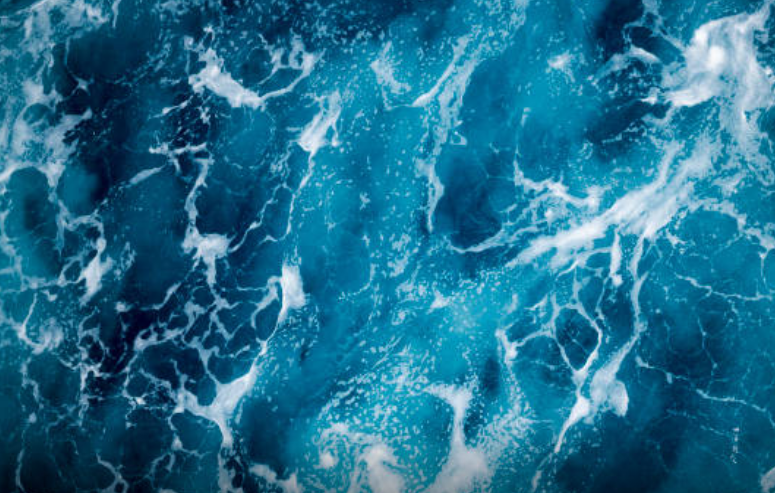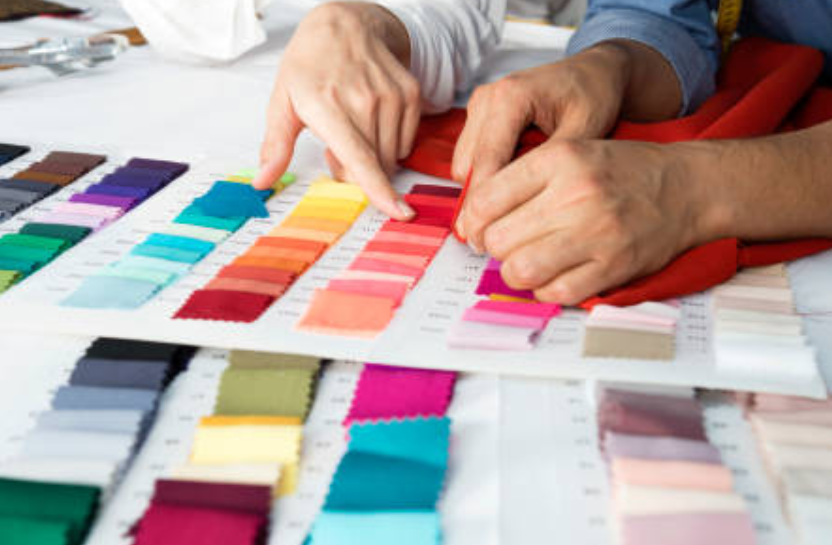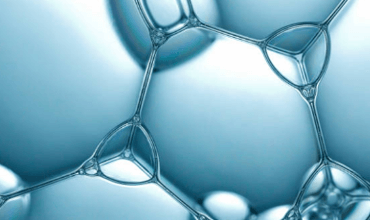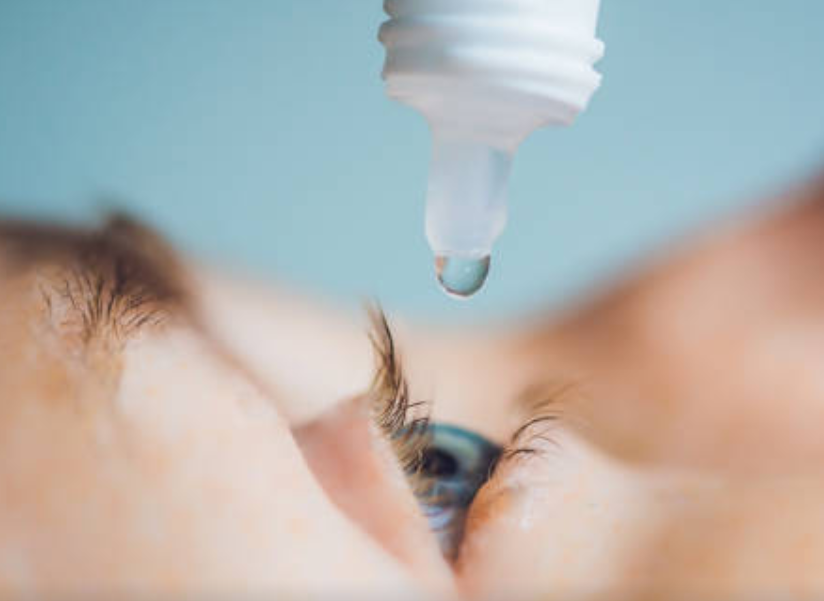A review on polymeric hydrogel membranes for wound dressing applications: PVA-based hydrogel dressings
a Polymeric Materials Research Department, Advanced Technology and New Materials Research Institute (ATNMRI), City of Scientific Research and Technological Applications (SRTA-City), New Borg Al-Arab City 21934, Alexandria, Egypt b Polymer Research Group,
Elbadawy A. Kamoun, El-Refaie S. Kenawy, Xin Chen
Journal of Advanced Research (2017) 8, 217–233
1 Abstract
This review presents the past and current efforts with a brief description on the featured properties of hydrogel membranes fabricated from biopolymers and synthetic ones for wound dressing applications. Many endeavors have been exerted during past ten years for developing new artificial polymeric membranes, which fulfill the demanded conditions for the treatment of skin wounds. This review mainly focuses on representing specifications of ideal polymeric wound dressing membranes, such as crosslinked hydrogels compatible with wound dressing purposes. But as the hydrogels with single component have low mechanical strength, recent trends have offered composite or hybrid hydrogel membranes to achieve the typical wound dressing requirements.
2 Introduction
Hydrogels are vastly hydrophilic macromolecular networks, which are produced by chemical or physical crosslinking of soluble polymers. Due to peculiar properties of hydrogels such as, high-sensitive to physiological environments, hydro- philic nature, soft tissue-like water content and adequate flex- ibility, make them excellent candidates for biomedical applications. Hydrogels can swell and de-swell water in a reversible direction, showing specific environmental stimuli- responsive e.g. temperature, pH, and ionic strength. Thus, such smart physiological response of hydrogels toward changes of physiological variable suggests their use in several biomedical applications . Hydrogels have been introduced for the first time as crosslinked 2-hydroxyethyl methacrylate (HEMA) hydrogels by Wichterle and Lim have been applied in numerous biomedical applications e.g. drug carrier, absorbable sutures, osteoporosis, and as neoplasm owing to their hydrophilic characters. At that time, Lim and Sun have offered calcium-alginate microcapsules for cell engi- neering and then, Yannas ’s group have fabricated synthetic hydrogels composed of natural polymer e.g. collagen to obtain novel dressing materials, showing optimal conditions for healing burns and wound dressing. Subsequently, poly- meric hydrogels have much attentions and interests of bioma- terials scientists for many years Winter has introduced the first generation of polymeric dressings and provided the optimal environments for wound repair. In the mid 1970s, polymeric membranes have been investigated in the development of syn- thetic dressing materials. In 1978, several chitin-based poly- meric materials have been used as the earliest wounds covers, owing to their appealing biological activities, showing that polymers are excellent candidates for developing dressing materials. The research and development trend of hydrogels as polymeric transitory dressing membranes are becom- ing the main commercial target.
According to the first attempts, biomaterial scientists sug- gested that hydrogels as dressing membranes meet all requirments for wound healing and proper candidate for burn patients in the shortest time possible because of the following justifications:
(1) hydrogels control the lost fluids and liquid from the body.
(2) maintain the wettability and moist in the wound zone
(3) they possess tissue-like structure and compatibility.
Most polymeric dressing materials e.g. hydro- gels, foams, films, hydrocolloids, and alginates have their own aforementioned advantages. However, hydrogels are reported the best choice compared to other dressing forms due to they have the needed requirements for the ideal wound dressings . The only disadvantage of hydrogels is their poor mechanical stability at swollen state. This drawback has been addressed by using “composite or hybrid hydrogel mem- branes” system consisting of more than one polymer in the dressing composition. Hydrogels are usual stabilized by means of chemical or physical interactions among the polymer chains which are known as crosslinking method. After crosslinking hydrogels have ability to retain great absorbed water in their mesh structure. The in situ forming hydrogels via physical crosslinking or radiation-crosslinking, hydrogels are preferred over the chemical crosslinking particularly in biomedical appli- cations. Because of the physical method avoids the presence of crosslinking agents, organic solvents, and chemical reagents overcomes toxicity issue, as compared to the second crosslink- ing method. Thus, physical crosslinking methods e.g. hydrogen bonding, Van der Waals bonds, or freeze-thawing (F-T) consecutive cycles are the safest crosslinking method for hydrogel formation which are mainly used for wound dressings and in-situ crosslinking cases.
The annual costs of caring for chronic wounds in USA reached to 25 billion USD. In addition the wound management markets are estimated to raise a value of 4.4 bil- lion USD in 2019 compared to the value of 3.1 billion USD in 2012. Further, statistics reported that between 6 and 15 billion USD was estimated as annual cost for healing of chronic wounds in USA. Accordingly, many significant efforts have been done to mitigate the cost management of wound care approaches. Strangely enough, although polymeric dress- ing’s progress has shown potential promising and has existed apparently in literatures for several decades, its understanding is still very limited and their publication numbers is a relatively exclusive and scatter. On the light of last contributions, poly- vinyl alcohol (PVA)-hybrid hydrogel membranes were consid- ered the most frequently polymeric membrane candidate for wound dressings and covers. This review aims to recollect the most polymers which previously blended with PVA for using as polymeric wound dressings, knowing that these mod- ern dressings are suggested to initiate the healing efficiency and rate of wound instead of just to cover it. Thus, the review focuses on showing the remarkable polymers e.g. bio, syn- thetic, or composite polymers which were reported in literature as PVA-based hydrogel dressings.
2.1 The concept of hydrogels as wound dressings
Intrinsic properties of membranes as wound dressings to endorse the skin healing and to protect the skin defect zone from infection, have been progressively investigated and applied in the clinical sectors since early eighties. The mech- anism of hydrogels as wound dressings can be ascribed as fol- lows. Hydrogels can absorb and retain the wound exudates, which promote fibroblast proliferation and keratinocyte migration. The last two processes are very necessary for com- plete epithelialization and healing of the wound. In addi- tion the tight mesh size of hydrogels structure protects the wound from infection and prevents microorganism and bacte- ria to reach the wound area. However, hydrogels structure allows transporting bioactive molecules e.g. antibiotics, and pharmaceuticals to wound centre. Such molecules can be entrapped into hydrogel networks during gelling process, while these molecules can be exchanged with absorbing the wound exudates during the sustainable release process after contacting hydrogels with the wound surface. The significant tissue-like water content of hydrogels provides the needed flexibility and elasticity to adapt wounds located in different body sites.
2.2 Skin and wound structure
Skin is the principle exterior defense system which protects the inner body systems from microorganism’s attack, contamina- tion, infection, and the effect of external environment. It was found that, the skin of body adult can cover area of 2m2 and its weight is more than 10 wt.% of total weight of adult body. Skin plays a vital role to regulate the temperature of body and transmitting the external environment information, like pains and heat. Skin composed form three multi- histological layers, the epidermis, the dermis, and the hypoder- mis or subcutaneous layer . The epidermis upper layers or the stratum corneum layers have been revealed for building the main barrier to percutaneous penetration of any external invasion. Dermis layer exists exactly adjacent to epidermis layer and consist of connective tissues matrix which provide the elasticity and deformation resistance for skin. Also, dermis layer contain the blood vessels which give the layers with nutri- ents and oxygen. The hypodermis layer are subcutaneous fat tissue followed the epidermis and dermis layers which provide the thermal isolation and mechanical protection to the body. A wound is described as a break or defect in the skin, which formed due to physicochemical or thermal damage. The wound is divided into acute and chronic wounds. Acute wounds are injured skin that needs a healing over periods 8–12 weeks, such as burns, and chemical injuries which result in attrition contact between skin and hard surface. Chronic wounds need a long healing time reaches to months, and leaves serious scars. There are some reasons which delay the healing of chronic wounds such as, diabetes, wound strong dryness and infections. Whereas, the healing of wound passes during four stages, homeostasis, inflammation, granula- tion tissue formation and remodeling which timely interfered. These healing phases affected on some specific and individual factors e.g. nutrition, patient age, diseases, size, depth and cau- sation of wound.
3 Wound dressings
Thousands of patients suffered annually from different kinds of epidermal or skin damage or burns by hot water, flames, accidents, and boiling oil. These accidents normally accom- pany with disabilities on treatment and high cost treatment or even sometimes death. As the World Health Organization, more than 30,000 deaths per year occur, owing to scalds and burns forms. Notably, both two patients’ cases of adults and overage people are suffering over challenges that dermis regeneration cannot occur spontaneously again. Since auto- skin repair has somewhat accessibility and accompanied by further scarring. This traditional approach for substantial loss of dermis cannot meet the requirements, and polymeric dress- ing materials became inevitable for skin tissue repair or healing with time.
3.1 History of wound dressings
Until the mid 1962, the researches of wound dressing and heal- ing were somewhat neglected. It was supposed previously that the wound heal is faster and more efficient, if it is kept dried and maintained uncovered. This speculation was assumed before establishing the ideal requirements for wound healing materials. The pioneering work of Winter designed the first generation of wound film or ‘‘dressings”, where he revealed that the epithelial repair of wounded pig skin was at least twice compared to the air-exposed wounds. Since this date, the stud- ies and researches of wound dressing development were further heightened; suggesting ideal wound dressings should keep a wetted environment with high biocompatibility and prohibit the bacterial infection for accelerating the tissue regeneration. In eighties, the wound dressings were classified according to their wettability degree into dried and wet dressings. The idea of the dried wound dressings was regarded the proper for wound healing. Until the mid of 1970s, the woven cotton gauze or non-woven blends of rayon with other fibers like polyester or cotton, were known as the most frequently dressings in the market. The traditional or dried dressings maintained the wound area dry, reduced the wound size from view, allowed to absorb all wound exudates and fluids causing a leakage and provided further contamination. Thus, this behav- ior was classified as a hostile for bacterial proliferation and also for viability of the mammalian cells and tissue repair. According last investigations, Winter found that in case dried dressings, a scab can covers the whole wound area which decreases the epithelialization rate and inhibit the dressing rate. Therefore the gauze-cotton dressings (dried dressings) which were earlier frequently utilized as wound dressings became now not so useful because their own drawbacks, as fol- lows: Inability to protect the wound from microbial invasion, cause strong pains for patients during the removal time, due to their big adhere on wound surface, accumulated wound exudates at wound surface owing to their low absorption rate, which facilitate the microbial attack, low gases permeability, not suitable for chronic wounds, and keep the wound dried which decreases the epithelial- ization rate and cell proliferation.
3.2 Requirements of ideal wound dressings
It was demonstrated that the wound healing with wet dressings is faster than that with dried dressings. This fact is ascribed to the healing and the renewed skin without formation of eschars or inflammation; can be only taken place in a wet environment. Thus, the wetted or moisten dressings were taken in account to be the suitable dressings candidate for skin repair and wound dressing. Also, they were considered with high water content and inherent permeability. An ideal wound dressing materials should fulfill the following characteristics:
(a) keep a local moist environment around wound.
(b) good gases transmission.
(c) remove excess exudates, but do not reach to saturation on wound outer surface.
(d) protect the wound from micro-organisms, infections, or contamina- tions.
(e) stop the wound desiccation.
(f) reduce the wound sur- face necrosis.
(g) stimulate the growth factor.
(h) possess mechanical protection.
(i) are easy and comfortable to remove and change, non allergic, non-toxic and biocompatible, biodegradable and elastic.
(j) aid to reduce the pain from the wound and costly/commercially acceptable.
(k) easily ster- ilized .
Toward this end, wound healing takes place effi- ciently and faster in wet environment, as provided by hydrogel than dried environment. Interestingly, hydrogels can control the scab formation and allow for cell proliferation and epthilialization process. For emphasizing that hydrogels are eventually the best choice for wound dressings. It was found that the water and fluids losses from wounded skin are almost 20 times greater than the normal skin. Thus, the water permeability of used dressings should control the exten- sive dehydration as well as building up of exudates and scabs without affecting on the epithelialization or cell proliferationprocesses,asprovided by hydrogels. Researchers reported that the regular lost-water from normal skin is 250 gm—2/day at 35 °C, this amount of water loss extensively increase to 5000 gm—2/day based on the nature of wound. This exhibits that, the used dressing should be thin-film or membrane which possesses a high water-vapor permeability, high-liquid capac- ity, bacterial growth, and repair recovery occurs . As such, wound dressings should have a satisfied and balanced wound wall adherent but easy to remove after treatment.
3.3 Classification of wound dressings
Dressings materials which are used for wounds or burns are known as ‘‘artificial skin”, should possess properties of usual skin to accelerate the recovery within wounded or destroyed skin areas. They are used for wounds and burns were classified into traditional, biological, and artificial dressings.
3.3.1 Traditional dressings
The most famous example of this category is gauze or gauze- woven cotton composite dressings, which were offered since the mid 1970s. These materials were characterized with their low cost, easy use and fabrication. However, the popular disadvantages of these materials restricted their use, can be described. The gauze and gauze-cotton composite possesses much absorbent capacity of wound exudates which causes a fast dehydration and promotes the bacterial growth and con- tamination. In addition, at the end of treatment the cover removal is a somewhat difficult that causes bleeding or damage to the renewed epithelial flora. Thus, many attentions have been exerted to address these disadvantages by grafting the gauze-cotton composite with non-adhesive inner surface were fabricated to relieve the pain or minimize the damage to the renewed skin when removing the dressings. Advanced cotton gauze composite have been recently developed to meet all requirements of typical dressings. Cotton gauze was coated with chitosan-Ag-ZnO nanocomposites. Obtained results illustrated that, treating of cotton gauze membrane with chitosan-Ag-ZnO increased swelling capacity and improved antibacterial activity versus Escherichia coli and Staphylococ- cus aureus.
3.3.2 Biological dressings
The biological dressings as called ‘‘auto-grafting” are regarded the most suitable materials for complete healing of deep, chronic wounds and burns. This method is depending upon the donation of normal and fresh skin from foreigner bodies e.g. human, animals, or cadavers. Such materials of this method are from collagen-type structure including elastin and lipids. The basic drawback of these materials is sometimes inadequate for donating skin part for deep or large wound, which results in the search to new tissue donor.
3.3.3 Artificial dressings
Artificial dressings are fabricated from synthetic materials such as, non-biological materials and polymers which are not found in skin ingredients. Synthetic dressing’s composition should be a harmless, mechanically stable, biodegradable, and presents a proper environment for the tissue repair. Recently, there are huge demands for polymeric membrane materials to be applied for wound dressings. The polymeric wound dressings have been used recently in different forms such as films, foams, hydrogels, alginates, and hydrocolloids.
Hydrogel dressings had large share for wound dressing applications due to their advantages excelled on own disadvan. At present, PVA is one of the most frequently and the oldest synthetic polymer have been employed as, wound dressings, wound management, drug delivery systems, artificial organ, and contact lense. However, PVA hydrogel has inadequate elasticity, stiff membrane, and very incomplete hydrophilic characteristics which restrict its use alone as wound dressing polymeric membranes. Moreover, Kamoun et al. have reported that the properties of hydrogels based PVA-composite polymers have outperformed their counterparts of other polymers. Sood et al.,have reported that polymeric wound dressings based on hydrogels facilitated the healing of pressure ulcers patient’s by promoting more rapid epithelial- ization. Hence, the number healed wounds with hydrogels as dressings were 85%, compared to 50% with those which were healed by traditional gauze dressings.
4 Natural polymers
4.1 Collagen
Collagen type-I is of the first, the oldest, and the most fre- quently dressings till date, it is a biocompatible abundant pro- tein existing in connective tissues of body. The collagen was first used in human body by Knapp et al. Collagen was used the first time as injectable and building materials under the dermis in wounds in 1980. Different collagen forms e.g. suspensions, foams, wound dressings materials, suture, sponges and gels have been employed in literatures for dermal injections, while collagen has not been used itself yet, as wound dressing membranes. Collagen-rich pig skin was used previ- ously as wound dressings. Recently, biodegradable colla- gen type-I membranes were used for rapid epithelialization in surgical defects of oral mucosa, for burns/chronic wounds, and for superficial partial thickness burns in chil- dren. Collagen was not combined with PVA in a wide scope as wound dressings, this might owing to collagen is used as a skin regenerative templates. Collagen plays major role in haemostasis in order to promote the wound healing and sup- ports fibroblasts growth, attachment, differentiation, and migration of kerationcytes directly. However, collagen was combined with other polymers e.g. hyaluronic acid as dressing membranes, skin regenerative templates or skin substitute matrix. Nanofibrous composite membranes composed of collagen-chitosan-PEO was synthesized by electrospinning as dressing membranes. The common disadvantage of colla- gen membranes usage is, they have a big permeable to bacteria and microorganisms.
4.2 Chitin derivatives and chitosan
Chitin is a copolymer polysaccharide composed of N-acetyl-D- glucosamine and N-glucosamine units are distributed in block or random form during biopolymer chains. This biopolymer is called as chitin or chitosan depending on the ratio between N- acetyl-glucosamine or N-glucosamine is greater than 50% in the biopolymer chain, respectively. Chitosan is soluble in a dilute acidic solution of pH 2, as a result of it possesses a rigid crystalline structure. Chitin and chitosan are regarded the second common biopolymer used in the past after collagen as wound dressings, due to their antimicrobial activ- ity, resistance against environmental conditions, adhesive nat- ure, antifungal, and excellent oxygen permeability. Thus, chitin and chitosan were employed as excellent membranes for wound and burn dressings. It was noticed that chitosan enhances the granulation of wound which candidates it as accelerator agent for treating open and deep wounds. Due to its haemostatic effect and it accelerates fibroblasts layer forma- tion which increases the healing rate. Chitosan as wound dress- ing was fabricated in different forms, such as films, hydrogels, fibers, powders, and nanoparticles. The popular disadvan- tage of chitosan use as dressings is its high cost and difficult handled.
Chitosan was applied in two main directions as wound dressings, first as coated-textile materials, and second in a com- bination with PVA composite membranes using freeze- thawing (F-T) cycles method. Chitosan was first used as coat- ing martial-based textiles for wound dressings. Cotton tex- tile was layered with chitosan and polyethylene glycol (PEG) afterwards freeze-dried, where chitosan-PEG formed a very porous thin dressing film. They found that an addition of chitosan controlled the film surface morphology, while PEG was used as pores forming agent. Yu et al.have designed a composite hydrogel membrane from polyvinyl alcohol-poly (N-vinyl pyrrolidone)-chitosan containing antibiotic. The pre- pared membrane showed a quick antibiotic release at the beginning then becomes slower with time, which recommended for the healing management usage, while this membrane showed a good mechanical stability and elongation percentage. Samah et al.have prepared chitosan-coated gauze dress- ings, they reported a considered microbial resistance against
E. coli and Lactobacillus growth, while thermal and physico- chemical properties were evaluated. Chitosan-alginate mem- branes for wound dressing and healing using poly electrolyte complex crosslinking concept, were prepared by Wang et al.Obtained membranes showed a quick healing rate for incision wounds in rat-model and high exudates capacity, com- pared to commercial gauzes. PVA-chitosan blend hydrogel membranes as wound dressings were designed for the first time by Cascone et al.using repeated (F-T) cycles. The results revealed that an addition high content of chitosan to mem- branes prevents the crystalline phase formation of PVA, which affects slightly on the thermal stability and forms porous and filamentous morphological structure. New crosslinking method of PVA-chitosan hydrogel membranes was offered by Yang and co-workers. Hydrogel membranes were formed by freeze-thawing cycles followed by c-irradiation, or the reverse. They reported that hydrogels crosslinked with irra- diation then F-T cycles showed high swelling capacity, high thermal/mechanical stability, and low water evaporation com- pared to those crosslinked by F-T cycles then irradiation or F-T cycles alone. In addition hydrogels crosslinked by F-T, then irradiation have a good resistance against Escherichia coli (E. coli) and with high chitosan contents in membranes. Also, results of Yang et al.showed a rapid healing for full- thickness wound after addition glycerol into-PVA-chitosan membranes, which exhibited non-toxicity toward L929 mouse fibroblast cells in MTT-assay test.
El-Salmawi suggested c-radiation induced for crosslinking PVA-chitosan dressing membranes. Results revealed that mechanical properties and microbe penetration test increased with increasing PVA content or irradiation doses, due to high crosslinked structure formed. While swelling capacity and antimicrobial activity increased with chitosan contents in membranes. New grafting method was used by Don et al. for synthesis of chitosan-g-PVA-PVA hydrogel membranes. Results showed that blood compatibility of chitosan-g-PVA-PVA hydrogel membranes was improved byaddition of pure PVA or low moieties of PVA-chitosan, while pure chitosan showed poor blood compatibility. Sung et al. suggested minocycline-loaded PVA-chitosan hydrogel films as wound dressings using F-T cycles. Results showed that an addition of chitosan increased swelling capacity, water vapor transmission, and pores areas. On the contrary, it decreased mechanical and thermal stability of membranes. Similarly, an addition of minocycline into membranes acceler- ated the healing rat of dorsum wound, as compared with PVA- chitosan membranes without minocycline. Recently, Zhang et al. have proposed new dressing membranes from carboxyl-modified PVA-chitosan hydrogel containing gentam- icin sulfate, using solution-casting method and chemical crosslinking based on formation of amide linkage. Their bioe- valuation tests showed that, gentamicin-loaded membranes possess sustainable release profile, and restrain the bacterial proliferation and protect the wound area from infection.
Chitosan derivatives have ability to soluble in acidic, med- ium and basic conditions, were found better than chitosan itself, due to the antibacterial activity of chitosan was noticed only in acidic physiological conations and inadequate homo- geneity between pure chitosan and PVA. N-O-carboxymethyl chitosan (CM-chitosan), carboxyethyl chitosan (CE-chitosan), and quaternary chitosan (Q-chitosan), have given much attentions due to their excellent antibacterial and antifungal activities. Zhao et al. have prepared PVA-CM-chitosan membranes as wound dressings using elec- tron beam irradiation. PVA-CM-chitosan membranes showed a biological resistance against E.coli even with low CM-chitosan concentrations. Moreover, grafting interaction among membrane compositions was observed by electron beam irradiation, and full homogeneity between them was noticed too. They have also prepared PVA-CE-chitosan nano- fibers mats using electrospinning for skin regeneration and healing. Ignatova et al. [50] have used electrospinning tech- nique to prepare PVA-Q-chitosan nano-fibrous mats, which exhibited a significant antibacterial activity and antifungal growth, due to presence of quaternary ammonium groups. A commercial N-carboxybutyl chitosan-agarous as topical membranes-type wound dressing were synthesized using a supercritical solvent impregnation, by Dias et al. Results showed that membranes have a high water holding capacity and good vapor transmission rate which gave them in typical range of commercial topical wound dressings.
4.3 Alginic acid and sodium alginate
Alginic acid is a natural linear polysaccharide extracted from brown marine algae (seaweed) such as Laminaria and Asco- phyllum species. Alginic acid was first patented by Stanford in 1880, and was first discussed in literature in 1883. Alginic acid consists of a linear copolymer of a-L-guluronic acid and b-D-mannuronic acid, where the ratio between them adjusts the elasticity of obtained crosslinked alginic gels. Alginic acid and its salts were first used as wound dressings and treatment in the form of gels and sponges by Thomas. Thomas reported that alginic acid dressings improved the healing rate and cellular activity properties of wound such as, haemostatic, adhesion and cells proliferation. Have prepared PVA-alginate hydrogel membranes con-taining nitrofurazone, ampicillin, and clindamycin, respec- tively as wound dressings using F-T cycles method. They found that, the addition of alginate in membranes increased swelling ability, thermal stability and in vitro protein adsorp- tion resulting in reduction of blood compatibility. However, it decreased the mechanical stability of membranes. In addi- tion, alginate content has a prominent impact on the release behavior of ampicillin or clindamycin from dressing mem- branes. Nam et al. have prepared PVA-alginate hydrogel membranes using the 60Co c-ray irradiation techniques. Results revealed that alginate increases, swelling capacity of membranes increases too. Moreover, the foreign reaction due to implantation of PVA-alginate membranes in wound rats was a quit limit and exhibited small sizes with non-scars healed wound. This behavior is ascribed to alginate membranes have good haemostatic, adhesion, absorptive properties for wound healing. Tarun et al. have developed a new concept to pre- pare PVA-alginate composite webs for wound healing, using electrospinning technique. They found PVA-alginate compos- ite fibers with high calcium alginate content exhibited high water vapor transmission character which provides the moist environment resulting in wound healing acceleration. Interest- ingly, Thomas has classified the crosslinked PVA-alginate membranes into three categories. The most important category is based on contacting with an exuding wound, and an ion- exchange reaction occurs between Ca2+ ions in membranes and Na+ ions in blood serum or wound fluids.
4.4 GelatinGelatin
Gelatin is the most abundant protein is obtained by an incom- plete denaturalization of collagen extracted from the boiling of some materials such as, bones (27%), connective tissues or organs (28%), and skin of certain animals (44%, usually cows and pigs). Due to, the gelatin has a nature origin, therefore it owns biological features and was formerly used for biomedical applications. Gelatin was formerly employed to prepare strong hydrogel membranes and transparent film with glucan as described above. Also, gelatin was blended physically with PVA to prepare hydrogel membranes containing-glutaminase for wound dressing using enzymatic crosslinking, followed by F-T crosslinking cycles. Results showed that, the gelatin content in membranes has a strong impact on fibroblast culture and proliferation behavior of wound due to its nature.
4.5 Hyaluronic acid or hyaluronan
Hyaluronic acid is a naturally occurring biodegradable- biopolymer, consists of D-glucouronic acid and D-N- acetylglucosamine. It was derived from bond and con- nective tissues of mammals and synovial fluids. It has been extensively used in cartilage and tissue repair since its discov- ery in 1934. Park et al. reported that hyaluronan can inter- act with most tissue components such as proteins and growth factors which facilitates the healing rate of most wound types and tissue repair. Price et al. have suggested hyaluronic acid in sheets to heal angiogenesis and to convert injured areas of chronic wound into acute wound. Miller et al. have used hyaluronic ester merogel for nasal wound dressing in sinusitis; they found that hyalyronic acid content in nasal dressing pro- tected the injured area from bacterial invasion and most infec- tions. Recently, Fahmy et al. have proposed PVA- hyaluronan hydrogel membranes containing ampicillin for wound dressing, using F-T crosslinking cycles. The bioevalua- tion results evidenced that prepared PVA-hyaluronan mem-branes free-ampicillin showed biological resistance against Candida albicans, owing to HA presence.
5 Conclusions
In this review, the most update progress of the use of poly- meric hydrogel membranes as wound dressings were recol- lected and summarized. The wet-retentive dressings have been chosen previously based on the type of wound-shape. Conversely, polymeric hydrogel dressings were found currently a convenient for any wound and burn types regardless the wound-shape. The traditional gauze cotton-dressings can re- injure the wound upon removal time. Thus, the occlusive poly- meric dressings were preferred over the semi-occlusive and tra- ditional dressings. The first category of polymeric dressings is based on natural polymers, which are among the core topics intensively discussed in literatures. Chitosan, glucan, alginates, and hyaluronan are more efficient as a wound-healing acceler- ator than synthetic polymers. Notably, wounds covered with biopolymers, e.g. chitosan-based dressings showed fast healing rate and scarless healing, which are similar the normal skin. The second category of dressings is based on the combination between biopolymers and synthetic ones using favorable phys- ical crosslinking method which is a convenient for healing pro- cess. PVA-biopolymers composites membranes exhibited better biological and antimicrobial activities than those com- posite with synthetic polymers, particularly PVA-chitosan and PVA-alginate membranes. Moreover, PVA-biopolymers composite membranes containing healing agents (e.g. Aloe vera, PEG, sterculia/Arabic gums) or antibiotics (e.g. sod. ampicillin or gentamicin) suggested being typical dressings for acute and chronic wounds. The third category of dressings is based on PVA-nanoparticles-composite membranes were exploited to achieve the features of polymer and nanofillers for improving the performance of dressings of faster healing rate, pain relieving role, and easier removal. Finally, it have decided that natural polymers based dressings have outper- formed the synthetic polymers, while additives were incorpo- rated to accelerate the healing rate and improve the mechanical potential, which were lately found advanced ther- apeutic impact as wound dressings.







